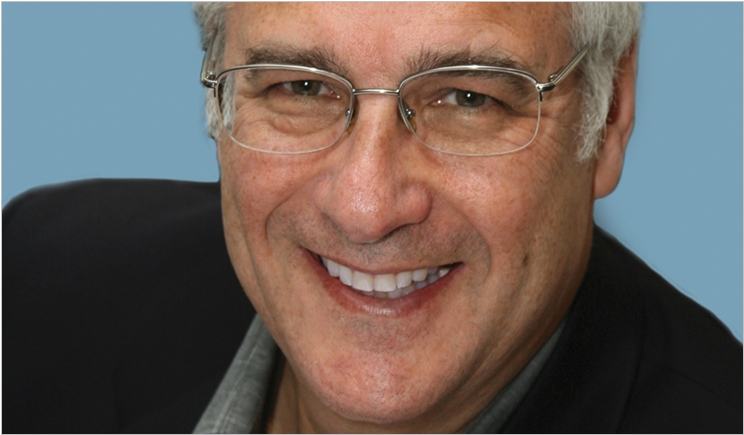
Dental professionals from around the world soon will be arriving at the Palais des Congrés de Montréal for the 47th Journées Dentaires Internationales du Québec, scheduled for Friday, May 26 to Tuesday, May 30. Presented by the Ordre des Dentistes du Québec, the 3-day conference will provide seminars and hands-on courses led by top dental experts.
Howard S. Glazer, DDS, will be there to present “I Have It… You Need It!” During his lecture for dentists and their staffs alike, Glazer will discuss materials, technologies, and techniques that make dentistry easier, more productive, and more fun, on Friday, May 26 from 8:30 am to 3:30 pm. The course will be worth 6 continuing education credits.
“These are products that I use almost on a daily basis in my practice. Nothing comes into my lecture unless I actually use and like the product, and if you came to my office, chances are you’ll find it,” Glazer said. “So it’s real dentistry by a real dentist using the products of today. I evaluate materials based on if they are faster, easier, and better for me, the doctor, and better for the ultimate end user, who is the patient.”
Before procedures can begin, dentists need to know what they’re looking at. Glazer will delve into digital radiography during his lecture, comparing and contrasting phosphor plates and sensors and explaining why he prefers the Intraoral Phosphor Plates from Air Techniques, which he calls much more tolerable for patients to hold in their mouth than hard, rigid sensors. The company’s CamX Spectra Caries Detection Aid is another valuable tool he will discuss.
“I can actually get a reading of the depth of decay before I even pick up a drill or an anesthetic syringe. If I have something that’s not very deep, why would I bother giving somebody an injection? It’s really ideal in being able to fully diagnose the patient’s problem,” said Glazer.
Sometimes, the restoration is necessary. Glazer will discuss composite resin materials for both anterior and posterior use such as Shofu’s Beautifil II, which lets dentists blend in the gingival tone and color while performing restorations on patients who have more root exposed and a higher gumline. He also will explore the new realm of bioactive materials from GC America and Pulpdent, which go beyond repair to restore the tooth.
“We can begin to heal the tooth and replace the missing ions that are lost during the decay process,” said Glazer. “They help the formation of secondary dentin so that you’re helping to protect the pulp to ensure the health of the tooth. And we have great materials too if you get very near the pulp or to a pulp exposure of some sort. There’s a whole wealth of materials out there that could be helpful.
Quality restorations need more than the right materials, though, and Glazer will look at today’s leading tools. Ring systems from companies like Garrison Dental and Ultradent Products help dentists place composites without the composite sticking to the instrument. He is particularly partial to Ivoclar Vivadent’s OptraSculpt Pad. Plus, Glazer will examine how soft-tissue diode lasers can assist in restorative dentistry.
“You can only restore what you can see,” Glazer said. “Very often we have decay that’s subgingival. How do you plan to restore that and maintain a dry field when doing restorative dentistry? You need to use a laser to expose that tissue and decay and ablate some of that tissue.”
Curing lights have seen some big changes lately, with some powerful models on the market now. Glazer recommends Ultradent’s VALO Grand and DentLight’s FUSION 5. Handpieces are seeing equally innovative developments, such as Bien Air’s iChiropro, which can be controlled via an iPad application. And on the other end of the technological spectrum, Glazer notes, burs remain essential to dental work too.
“With moving decay, you’ve got to be able to just take the decay and leave healthy tooth structure. The best bur to help you do that, once you’ve gained access to the carious lesion, is the SmartBur II from SS White Burs. It’s basically used in a slow-speed handpiece at 5,000 or 10,000 rpm, with no water, and it will not cut hard tissue. It will only remove soft dentin, so you can’t really expose anything with it,” Glazer said. “In fact, you could run it on your hand, on your skin, and it wouldn’t cut it because it’s not soft dentin.”
Of course, Glazer encourages dentists to bring their staff members so they have a better understanding of the new gear that the practice may be purchasing after his presentation. He also promises a very useful and timely look at today’s dental products market, exploring a variety of additional products beyond those mentioned here.
“The things I talk about nowadays didn’t exist 5 years ago. A lot of them. And most of them will be replaced in 5 years,” Glazer said. “Dentistry is changing rapidly, and for the better.”
Related Articles
Materials and Instruments: Has Anything Changed?
Dr. Rella Christensen to Explore the Cutting Edge in Québec
More Than 12,000 Delegates Expected for Montréal Dental Show


